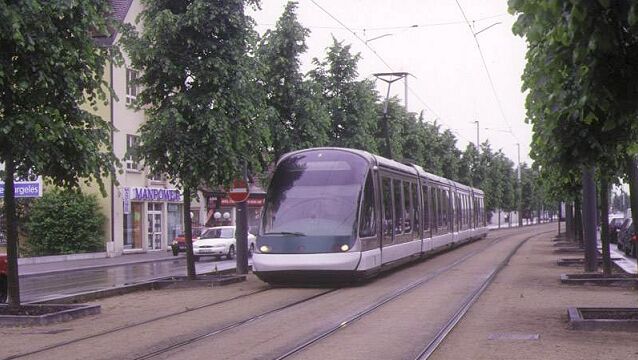Cross-posted from Spacing Votes
With all of the recent discussion surrounding transit policies, subway extensions and streetcar rights-of-way, a brief primer on transit technologies seems to be in order. With all of the acronyms that are thrown around in transit discussions, it’s easy to understand why voters may not know the difference between a BRT and a BLT (a BLT is the only one you can eat). Remember that all of the different transit modes, from the local bus route to the commuter rail line, has its own place within a successful public transit system.
WHAT IS A BRT?

(image via the San Francisco County Transportation Authority)
Bus rapid transit (BRT) can be implemented relatively quickly and inexpensively. The major components of BRT’s are:
– buses running in their own lane so that they do not compete with other forms of traffic (can be physically separated lanes that run down the middle of the road)
– by taking buses out of mixed traffic, you can increase speed, predictability and reliability
– traffic signal priority so that buses spend less time at red lights
– approximate capacity of 5000 people/hour (based on 60 foot articulated buses running at 60 buses/hour)
– approximate construction cost of $20 million/km*
For a brief BRT simulation, check out Phase 2 of VIVA’s System Phases.
WHAT IS AN LRT?

(image of an LRT in Strasbourg, France via lightrailnow.org)
Light rapid transit (LRT) is a distant cousin of the subway, but is much cheaper to implement. It’s a versatile mode of transit that can run on the street, in a separate lane down the middle of the road, in a completely protected right-of-way or in shallow tunnels. In the Toronto context, LRT’s would most likely run in some mixture of separate lanes down the middle of the road (like Spadina or St. Clair) or shallow tunnels. (Note: the Scarborough RT is not an LRT.)
– LRT’s typically involve new style streetcars that are accessible via low floors. Some new streetcars can also be driven from the front and back, eliminating the need to turn around
– by taking LRT’s out of mixed traffic, you enhance speed, predictability and reliability
– LRT’s should have traffic signal priority, which reduces the amount of time they spend waiting at red lights
– LRT’s are environmentally friendly
– LRT stations are simpler and less costly then extravagant subway stations
– LRT’s are more versatile then subways in terms of geographic constraints
– perceived as a more attractive mode of transit then buses, asthetically and in the minds of riders
– approximate capacity is 9000 people/hour (based on two-car trains with 300 riders, running at 30 trains/hour. However, capacity can be easily increased with three-car trains)
– approximate construction cost of $40 million/km*
Check out Hampton Roads Transit’s (Virginia) short LRT simulation video
WHAT IS A SUBWAY?

(image of the classic Gloucester TTC subway car via Gloucestershire transport history)
A subway is a high capacity transit mode which must run on a protected right of way. Subways are best suited to areas with a high density mixture of homes, jobs, schools, recreation, entertainment and shopping facilities.
– approximate capacity of 40,000 people/hour (based on 6-car trains with appropriate signalling and operational time b/w trains)
– approximate construction cost is $200 million/km*
*NOTE: cost is for general comparison only. Inflation has changed cost/km figures over time and each individual line would have different construction variables, leading to different costs.
For a more in depth discussion of each respective transit mode and their capabilities, please reference Steve Munro’s Grand Design for Transit – Appendix



